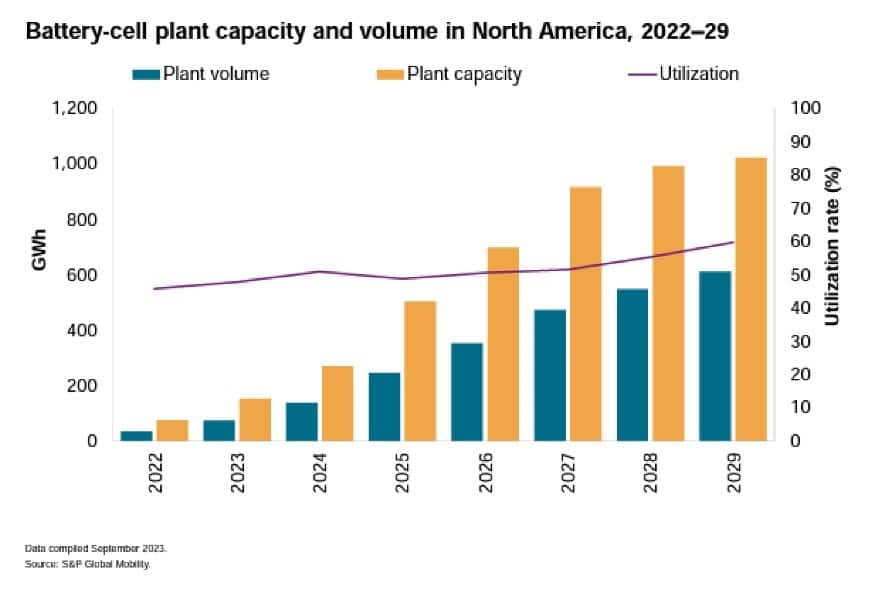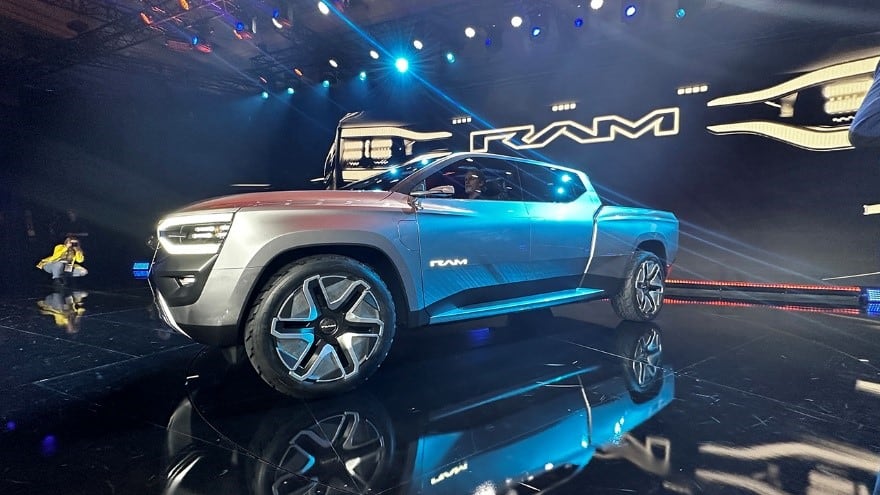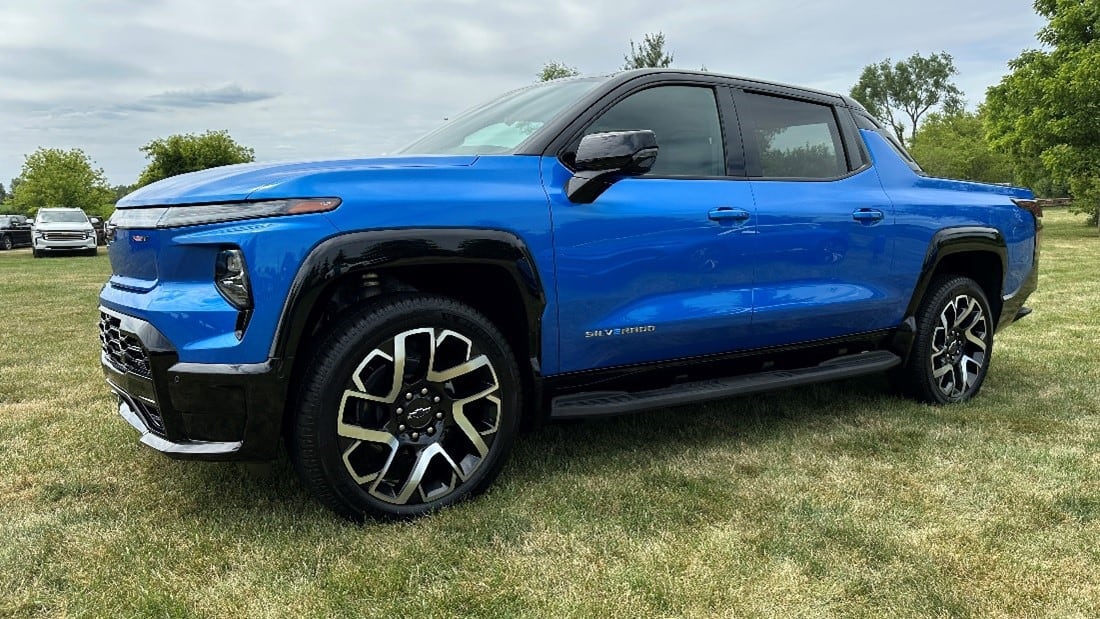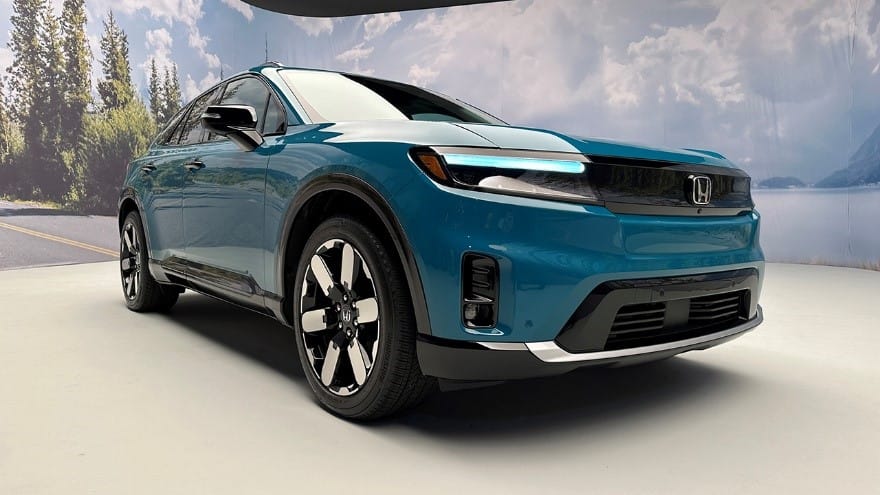The 2024 US presidential election could end up a second
Biden-Trump contest, with former President Donald Trump the front
runner for the Republican party nomination after securing a win in
the Iowa caucus this week and President Joe Biden currently the
front runner for the Democratic party nomination.
Regardless of which party wins, the 2024 US presidential
election may affect the automotive industry profoundly. A shift in
the White House or Congressional majority could impact
environmental policy and the regulatory environment, and lead to
changes in the federal tax and incentive support for the EV
transition. That could have massive downstream repercussions on the
entire automotive supply chain, by triggering changes in capital
allocation and timing for planned and future automaker and supplier
investments.
Two key pieces of Democratic-led legislation passed under
President Joe Biden have significant impact on the development of a
US EV market, the Inflation Reduction Act (IRA) and the Bipartisan
Infrastructure Law (BIL). If the 2024 US presidential election
results in a Republican-led White House and/or Congress, the new
administration may look to curb these laws and change or eliminate
federal funding. A reversal or reduction of federal subsidies could
cause OEMs, suppliers, and battery companies to rethink their
product and investment strategy, particularly as it relates to
North American sourcing.
The election also has the potential to impact greenhouse gas
emissions and fuel economy regulations. Under the previous Trump
administration, less aggressive regulatory policy was enacted, and
the mechanism that allows California to set its own emissions
regulations was ended. Under President Biden, more aggressive
targets were finalized covering regulations through the 2026 model
year, and California’s waiver was reinstated. <span/>Proposed EPA and NHTSA rules for the 2027
to 2032 model years are expected to be finalized before the
election.
If the election results in a shift to a Republican
administration, regulations could be pulled back and that
California’s waiver again revoked. NHTSA is required by US law to
set standards at least 18 months before a model year; with a new
president taking office in January 2025, a regulatory change would
have to be passed nearly immediately to impact the 2027 model year.
However, the process for change simply does not happen that fast.
Given the time that it takes for regulation to work through the
system, the earliest model year to be affected by a new change may
be the 2028 model year.
Investment implications
S&P Global Mobility estimates that, in the year following
the enactment of the IRA in August 2022, an investment exceeding
$100 billion was announced for US battery and electric vehicle
manufacturing initiatives. Of particular concern are projects which
have already started construction. S&P Global Mobility
estimates that in 2022, the US will have seven operational battery
plants, with an annual capacity of 75-gigawatt hours (GWh); after
the IRA, we see as many as 24 battery plants currently planned or
under construction, which could increase capacity to 732 GWh. We
also expect that this investment could exceed medium-term
demand.

Regardless of party affiliation, congressional representatives
will need to continue to support funding for projects bringing
investments and jobs to their states and districts. While on the
national stage, Republicans may object to any subsidy that conjures
imagery of the Green New Deal, but lawmakers in states already
benefitting will need to protect those projects. This situation
could create more tension than already exists between federal and
state authority on a number of issues.
How will industry respond?
A reversal or reduction of subsidies could have substantial
impact on for OEMs, suppliers and battery companies in terms of
product and investment strategy. Without national incentives for
local investment,
less expensive supply sources for key materials outside of the
region may become more attractive. The credits often offset the
higher costs of local sourcing; without them, an already
unprofitable situation can become more of a challenge.
However, S&P Global Mobility also sees potential for
currently known investment plans to create more battery capacity
than demand projections expect would be needed. We are also seeing
some automakers and suppliers delay planned EV and battery
manufacturing capacity plans for 2024. However, that is more
related to changing expectations for demand rather than increased
risk for the IRA subsidies to change. With planned investment
likely to be higher than demand, both sides of the party aisle have
pointed arguments for and against maintaining the credits.
The baseline S&P Global Mobility forecasts assume that
current emissions and fuel economy regulation proposals are
finalized and the IRA law remains in place and unchallenged.
However, if the situation does change, we see potential for
automaker reactions in several general categories:
- Automakers focused solely on EVs already;
- Those who are poised to stay flexible;
- Those who will hold a course toward electrification (or EVs)
but may adjust timing and sourcing; and, - Those who have been marching to their own timing already.
Any change to emissions regulations also has the potential to
change the picture; lowering compliance requirements can enable
automakers and the market to move more slowly to ZEVs but puts
medium-term investment plans into question. In the longer term,
continued progress to a ZEV future is supported by global policies
and regulations.
Electric anyway, stay the course
The automakers who are already fully electric will, of course,
continue that path. This will include Tesla, Rivian, Fisker, and
Lucid.
Tesla’s North American production footprint is expected to grow
beginning in 2025 or 2026 when its Mexico plant is finally
constructed and online. Tesla has slowed development of its Mexico
plant because of concerns CEO Elon Musk has over the economy and
interest rates, rather than potential changes in the political
landscape. Rivian is committed to a Georgia plant under
construction. Lucid’s production capacity expansion plans for the
US are likely to be more affected by real demand for the new
Gravity SUV. If consumer acceptance trails company expectations,
expansion could slow regardless of tax incentives. Meanwhile,
Fisker aims for contract manufacturing and is therefore in less
control over its supply chain.

2025 Lucid Gravity / Stephanie Brinley for S&P Global
Mobility
Stay flexible to market demand and regulatory
forces
Stellantis and BMW have focused on developing platforms that can
accept ICE, EV or PHEV solutions, and potentially fuel-cell EV
solutions. Mercedes-Benz is in this camp as well, with public
statements that it will increasingly move to BEV, but maintain ICE
vehicle production so long as consumers demand it.
Though BMW is poised to launch its Neue Klasse BEV platform in
2025, to date it has been offering EV counterparts to most of its
product lineup – including expectations it will launch the X2 and
iX2 in March 2024 as well as the latest Mini Cooper seeing ICE and
EV versions.

2023 RAM BEV Concept / Stephanie Brinley for S&P Global
Mobility
Stellantis has not yet jumped into the electrification market in
the US significantly, aside from PHEV versions of Chrysler Pacifica
and several Jeep products. However, in Europe, it is much more
aggressive with its BEV efforts. Stellantis’ electrification
profile in North America is expected to change in late 2024 and
2025. In early January, the company confirmed it plans to introduce
seven EVs for North America in 2024, including Jeep Recon and
Wrangler S, Ram 1500 REV, Dodge Charger Daytona, and Fiat 500e.
Stellantis is also expected to expand the use of its range-extender
solution, which comes first in early 2025 in the Ramcharger; in
that vehicle, a V6 engine generates power for an electric battery
but has no connection to the drive wheels. Although Alfa Romeo is
expected to blend PHEV and EV offerings, the Maserati brand is
poised to go all-electric first.
For North America, the automakers in this camp may extend
internal combustion engine programs or
place higher emphasis on hybrid and PHEV solutions through the
rest of this decade. Expectations are for EV programs to continue
to be developed, however. By 2030 or so, the EV programs should be
in full swing, as the investments do need to be realized.
Without the IRA subsidies, however, there is risk that these
companies make different sourcing decisions. According to some late
2023 reports, Mercedes-Benz may change sourcing for the EQS SUV
from the US to Germany, Though the EQS is too expensive to qualify
for US consumer tax credits, it is unclear if the company had been
eligible for the manufacturing credits under the IRA.
Toyota is almost a case unto itself, but fits in the “flexible”
category – albeit for more philosophical reasons — driving its
forward product plan than US regulatory conditions or incentives.
Though Toyota waited until 2022 to get aggressive with a BEV
future, the company maintains that reaching carbon neutrality is
the goal, rather than electrification for its own sake. Toyota
steadfastly maintains that the number of batteries it has deployed
into hybrid and PHEV products has had a greater impact on reducing
overall fleet emissions than if those same batteries were deployed
in a much smaller number of EVs. The result is that Toyota has a
propulsion system formula that could enable the company to lean in
whichever direction is required from the blend of customer and
regulatory forces, including the availability of subsidies in any
given region.
Stick to the strategy, with some timing
changes

2025 Chevrolet Silverado EV / Stephanie Brinley for S&P
Global Mobility
While a change in IRA or emissions and fuel economy requirements
could cause this group of OEMs to change timing for their
transition from ICE to BEV, we expect they will largely stick to
their plans to move to all EV or ZEV by the about the middle or end
of the next decade. Automakers in this category include GM,
Volkswagen, and Hyundai Motor Group (including Hyundai, Kia and
Genesis brands in the US).
Automakers potentially best positioned to modulate production
and vehicle offerings throughout a murky situation include Hyundai
Motor Group, and to a lesser extent, Ford Motor Company.
Hyundai Motor Group has dedicated BEV platforms and plans to
grow those offerings, but most of the existing Hyundai and Kia
products currently offer ICE, hybrid and PHEV solutions, with some
also offering BEV on the same platform. If there is a loosening of
regulations, Hyundai Motor Group has hybrids and PHEV solutions
available. Presumably, they could extend and make moderate
improvements to keep the products fresh if regulations and
consumer demand make that the more profitable path to the end
of the decade.
Ford also has more hybrid and PHEV solutions available to extend
vehicle programs if they need to. Ford’s plans to offer fewer
models on its EV platforms and focus on higher volume for a more
limited range of products could be a benefit here as well, as
delaying planned capacity means delaying fewer vehicle
programs.
GM is expected to be revising its EV product plan and
eliminating some products, ideally shifting that capacity to other
vehicles and holding down build complexity. A challenge for GM in
this case may be that it has more brands to feed than Ford.
US policy agnostic
Nissan, Honda and Mazda have all indicated plans for increasing
electrification and BEVs, though in the early part of this decade,
none was moving quickly to address the need for the US market.

2025 Honda Prologue / Stephanie Brinley for S&P Global
Mobility
Nissan executives speaking at the Japan Mobility Show in October
2023 said their plan to develop US electrified offerings will land
at just the right time. Nissan has confirmed US EV production for
2025 and is also working to develop the e-Power range extender
solution for US consumer demands.
Mazda was expected to lean on partner Toyota for EVs, though
recent CEO remarks suggest the automaker is looking to keep this
development in-house and has set an aggressive target for the
2026-27 timeframe. Mazda’s North American BEV production investment
is not final, but as a mainstream brand, its vehicles may be more
sensitive to pricing; and being ineligible for the consumer tax
credit could pose a higher risk.
Honda took an expedient course to get BEVs for both Honda and
Acura brands in the US in 2024 by leveraging its work with GM. But
its plan to build an affordable EV platform with General Motors was
canceled in 2023. Honda’s BEV development for the US will now be
internal. As the product plans have changed, Honda is also
increasing its reliance on hybrid offerings in the US, aiming to
see half of its Accord, Civic, and CR-V sales be hybrid models.
What to watch
A Republican in the White House – combined with Congressional
control – has the potential to create challenges to the regulatory
structure as well as both the BIL and IRA.
All of these policies are predicated on the Biden Administration
having set a soft target of seeing 50% of US light vehicle sales
being zero emissions in 2030. This target is also part of Biden
having the US re-join the Paris Climate Accord and targeting
broader, aggressive carbon neutrality targets.
But even if a Republican candidate wins the Presidency, changes
to the EV-friendly laws may be impossible without Republican
control of both the House and the Senate; the IRA and BIL are
simply too large to change from the present course.
In addition, several of the states in which large battery
manufacturing investments are being made and where construction is
already underway are swing states that are vitally important to the
result of the Presidential race, with Georgia, Michigan and the
Carolinas leading the way. However, there has also been pushback
from residents in both Georgia and Michigan to these manufacturing
investments, showing that the divide over the path to a ZEV future
is playing out on the local as well as national level.
If the Republican party pushes a target of modifying the laws
providing for federal funding of green-manufacturing development
under the guise of fiscal discipline, investment commitments could
be scaled back or delayed. The potential for ensuing lost
manufacturing investment could see the Democratic party positioning
itself as the party supporting business and workers regarding the
country’s automotive industry.
In addition, regardless of campaign promises and rhetoric,
changing the law will require Congressional input and votes. With a
potentially split or opposition Congress, the elected president
could have a more difficult time delivering on the changes promised
on the campaign trail. For industry, these factors create
uncertainty, which is the most disruptive of elements. With
billions of dollars and the future of these companies at stake, the
industry has time and again said that certainty related to
regulations and policy is what they need most in executing a
forward path.
Implications for EV share
Against the backdrop of the next US election, S&P Global
Mobility presents potential top-line scenarios to our baseline EV
adoption forecast for the US.
Today’s baseline forecast includes possibility for US EV market
share to be closer to 45% in 2030 and assumes that OEMs succeed in
lobbying efforts to move away from EPA emissions aspirations and
lean heavier on the latest NHTSA proposal, which may enable use of
more alternative powertrains.
However, in the context of this discussion, if there are drastic
changes to the IRA or BIL and incentives for manufacturers and
consumers are reduced, we could expect to see the potential for EV
share to be closer to 37% in 2030.
Should the EPA and NHTSA proposals of 2023 be finalized and
unchanged, the law of the land would push electrification north of
50% in 2030.
The result is a hugely complex political and business
environment, with numerous interwoven and discrete variables.
TO DISCUSS POTENTIAL ELECTION OUTCOMES WITH OUR ADVISORY
TEAM
FOR MORE ON AUTOMOTIVE PLANNING AND FORECASTING
This article was published by S&P Global Mobility and not by S&P Global Ratings, which is a separately managed division of S&P Global.
- SEO Powered Content & PR Distribution. Get Amplified Today.
- PlatoData.Network Vertical Generative Ai. Empower Yourself. Access Here.
- PlatoAiStream. Web3 Intelligence. Knowledge Amplified. Access Here.
- PlatoESG. Carbon, CleanTech, Energy, Environment, Solar, Waste Management. Access Here.
- PlatoHealth. Biotech and Clinical Trials Intelligence. Access Here.
- Source: http://www.spglobal.com/mobility/en/research-analysis/2024-us-presidential-election-and-the-auto-industry.html



